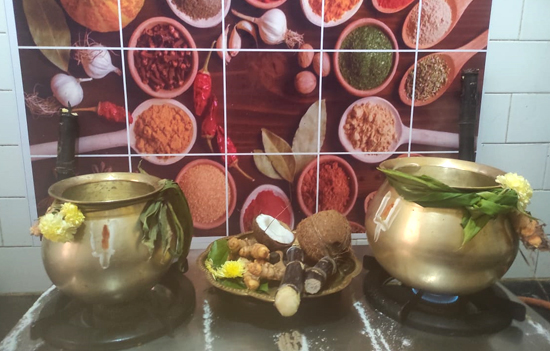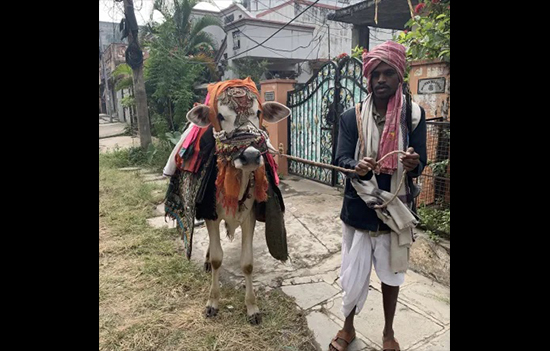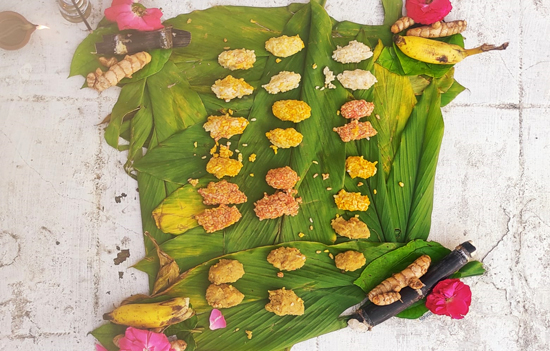- Know why and how Pongal is celebrated, including what is cooked on each
day.
India is a bountiful
landmass. It is no wonder that we have harvest festivals with rituals that
revolve around getting a bumper crop and appreciation of livestock. Pongal is a
harvest festival and it’s a four day celebration. The days are not always
consecutive.
Day one- Boghi also
spelt as Bhogi
Bhogi is the first day of the four day Pongal festival. The day is dedicated to Indra Deva. Farmers seek Indra's blessings for sufficient rain that leads to a bumper crop.
The celebrations on
Bhogi also include burning old clothes/things. The bonfire is symbolic and in
many places the practise has been discontinued.
Since Boghi is the
last day of the Margazhi month, the hope is that we, post reflection, let go of
old hurts, bad actions and misgivings and transform ourselves into a new person!
When you light a
bonfire with all the old stuff on Bhogi day, it marks a break with the past.
After a month of introspection, you are ready to take new decisions and move
forward.
Food on Boghi- Its usually sweet
potato “Poli” i.e. specially made for Boghi besides the other preparations like
Vadai and Sweet Pongal.
Day Two- Thai Pongal
Pongal is celebrated
at the end of the harvest season in Tamil Nadu. It coincides with the Makara
Sankranti celebrations across other parts of India. The meaning of the word
Pongal is “boiling over” or “rising over”. Here it means the pot of rice,
lentils and milk boils over.
That’s also why the
greeting is “Pongal-o-Pongal”. The prayer is
that happiness and good things overflow.
Its dedicated to
Surya, the Sun. Pongal day is the first day of the month of “Thai” and it is on
this day that the Sun starts its journey towards the northern hemisphere, also
called “Uttarayana”.
The traditional
Pongal is made on a stove outside the house in either a clay pot or bronze
vessel decorated with turmeric pods, turmeric leaves and sugarcane pieces.
A Kolam of Suryan (Sun) and Chandran (Moon) is drawn and rice, moong dal, Jeera, Pepper, Ghee, Curry leaves, Ginger and milk is put into a clay pot or a vengala (Bronze) paanai (pot). All family members gather around and shout “Pongal-o-pongal”.
 Pongal-Paanai
Pongal-Paanai
Food on Pongal day–
Ven Pongal (salty version) and Chakkarai Pongal (Sweet version) are definitely
made. Some of us make Aviyal, Kootu, Raw Banana dry curry etc besides plain
rice.
Day Three- Maatu
Pongal and Kanu Pidi
The day after Pongal is "Mattu Pongal" where cows are decorated and worshipped. It is a form of thanksgiving to the cows and bulls that help the farmers.
 Boom boom maatukaran (a
wanderer who makes a living using a decorated bull).
Boom boom maatukaran (a
wanderer who makes a living using a decorated bull).
The cows are bathed and decorated colourfully. The bulls are also decorated and the famous "Jallikattu", the bull taming sport is held in several villages across Tamil Nadu. Usually the “boom-boom” maatukaran (a wanderer who makes a living using a decorated bull) will visit homes on this day because he will be given food, dry rations or clothes.
 Kanu Pidi.
Kanu Pidi.
Kanu Pidi is celebrated by the Brahmin
community. We make two or three different coloured rice - white, yellow and
red. These are made into tiny balls and kept outside on Turmeric leaves. We
call out to crows to come and eat the rice balls and bless our family,
particularly siblings and the extended family.
Crows never eat
alone, they get their entire clan together and eat, so we pray that our
families stay close and together like the crows as they feed on the rice balls.
Day four- Kaanum
Pongal
This is of recent
origin. On day four, people in Tamil Nadu go out to the beach or some
exhibition etc, to see the sights around town and carry a picnic with them.
I was told by my
young weaver friend Gopinath, that for nearly a week starting Boghi Day, all
the weavers in Arani stop weaving and celebrate Pongal. They go out to Chennai
and other places to visit temples and do some sightseeing. It is their annual
holiday!! The looms are restarted on an auspicious day during “Valarpirai”– the
waxing moon.
Author is an Executive Coach, Co-founder www.Shikshadaan.com and blogs at www.90rollsroyces.com Pictures in article by author.
To read all
articles by author
To see over 35
albums of Tamil Nadu Temples